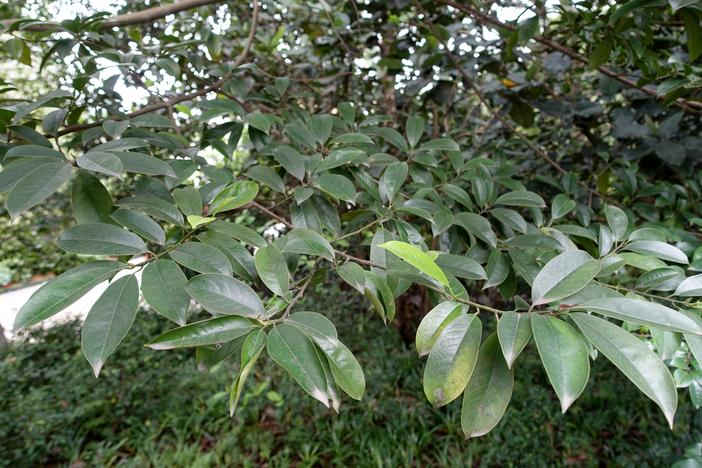Yellow Lily Tree
(Magnolia ernestii)
Yellow Lily Tree (Magnolia ernestii)
/
/

Daderot
CC0
Image By:
Daderot
Recorded By:
Copyright:
CC0
Copyright Notice:
Photo by: Daderot | License Type: CC0 | License URL: http://creativecommons.org/publicdomain/zero/1.0/deed.en | Uploader: Daderot | Publisher: Wikipedia Commons


Estimated Native Range
Summary
Magnolia ernestii, commonly known as Yellow Lily Tree, is a deciduous tree native to the subtropical forests of South-Central and Southeastern China. It can grow to a height of 40-70 feet (12-21 meters) and a width of 10-20 feet (3-6.1 meters). The Yellow Lily Tree is notable for its large, tulip-shaped flowers that are yellow with a hint of white, blooming in the spring and providing a showy display. The tree’s bark is smooth and gray, and it may produce cone-like fruiting clusters after flowering.
Magnolia ernestii is valued for its striking floral display and is often used in botanical gardens and as a specimen tree in large landscapes. It requires consistently moist, well-drained, acidic to neutral soil and thrives in full sun to part shade. While it prefers high amounts of water, it is important to avoid waterlogged conditions. The Yellow Lily Tree is relatively low maintenance but may require protection from late frosts that can damage early spring blooms. It is not commonly associated with serious pests or diseases, but scale insects and leaf spot can occasionally be a problem. This species is not known for being invasive when grown outside its native range.CC BY-SA 4.0
Magnolia ernestii is valued for its striking floral display and is often used in botanical gardens and as a specimen tree in large landscapes. It requires consistently moist, well-drained, acidic to neutral soil and thrives in full sun to part shade. While it prefers high amounts of water, it is important to avoid waterlogged conditions. The Yellow Lily Tree is relatively low maintenance but may require protection from late frosts that can damage early spring blooms. It is not commonly associated with serious pests or diseases, but scale insects and leaf spot can occasionally be a problem. This species is not known for being invasive when grown outside its native range.CC BY-SA 4.0
Plant Description
- Plant Type: Tree
- Height: 40-70 feet
- Width: 10-40 feet
- Growth Rate: Moderate
- Flower Color: Yellow, White
- Flowering Season: Spring
- Leaf Retention: Deciduous
Growth Requirements
- Sun: Full Sun, Part Shade
- Water: High
- Drainage: Medium
Common Uses
Bee Garden, Bird Garden, Butterfly Garden, Deer Resistant, Fragrant
Natural Habitat
Subtropical forests
Other Names
Common Names:
Scientific Names: , Magnolia ernestii, Michelia wilsonii,
GBIF Accepted Name: Magnolia ernestii Figlar